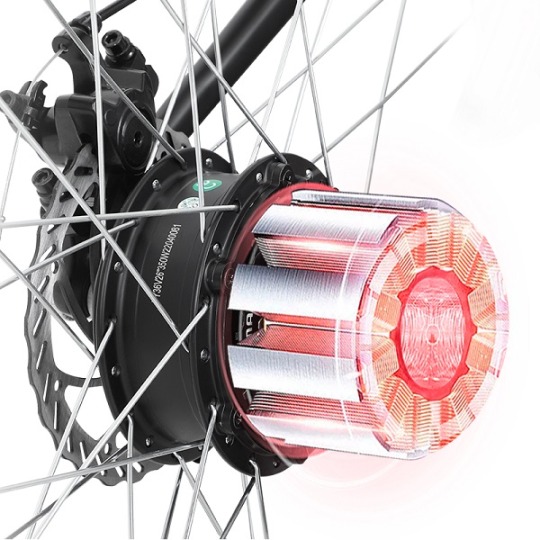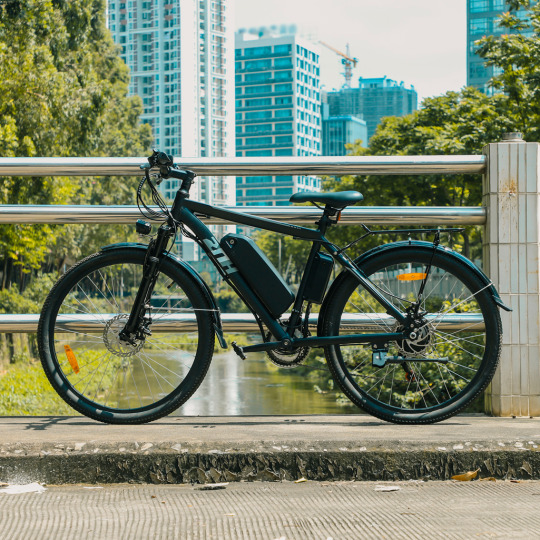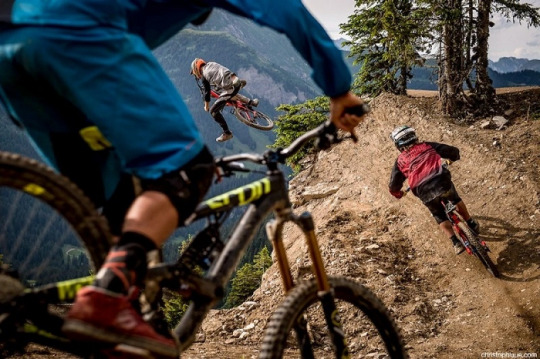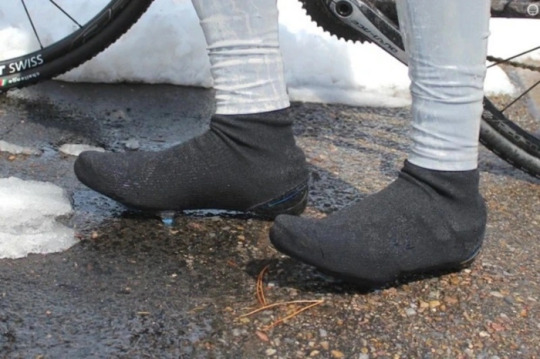Don't wanna be here? Send us removal request.
Text

ZNH Z3 Equipped with 350W brushless geared hub motor with 50 NM of torque,It boosts top speed to 20 mph in 15s. while reducing stress on your knees and thighs. that will allow you to climb 25°hills easily. 🎉SHOP AT👉️znhebike.com
#znhebike#bike#ebike#electricbike#ebikes#ebikestyle#ebiketour#ebikeshop#electricbikes#electricbikesales#ebikelife#ride#ebiker#electricbikelife#mountainbike#bikeride#bikelove#bikelife
1 note
·
View note
Text

Thank you for sharing your praise and trust with us.⭐️We also hope to make electric bicycles better and provide them to every friend who loves us.
0 notes
Text

🌿Green travel, low carbon era 😮An electric bicycle escorts the trip
#znhebike#bike#ebike#electricbike#ebikes#ebikestyle#ebiketour#ebikeshop#electricbikes#electricbikesales#ebikelife#ride#ebiker#electricbikelife#mountainbike#bikeride#bikelove#bikelife#bikestagram#outdoor#cycling#travel#carbohydrate#greentravel
0 notes
Text





perfect craftsmanship Every detail of the electric bicycle is completed with ingenuity and meticulousness to ensure that the car is more three-dimensional and aesthetic
1 note
·
View note
Text
Simple precautions for riding electric bicycles in winter

Riding an electric bicycle to reach your destination in winter requires a lot of arrangements and precautions. The weather conditions in any location in winter will always change, so you must be prepared and planned when riding an electric bicycle. It was an even bigger test for the rider due to the cold and slippery roads.
If you have a ZNH Z9 all-terrain electric bicycle, you can be more adaptable to complete the riding challenge in winter. Cycling in winter requires a lot of effort to pedal. Therefore, you should bring less luggage when traveling in winter, especially when you are far from home. Here are the tips you need for electric bikes this winter:
Anti-skid measures for tires:
Riding an electric bicycle on icy urban roads also requires snow chains to assist. Here, I would like to share an ultra-low-cost DIY bicycle snow chain solution. Use yellow plastic ropes, which are commonly used wire strapping straps when repairing computers. Prepare some thick strapping straps and tie them to the tire in alternating directions between each spoke. , Tighten it with pliers, cut off the excess, tie the plastic tie to the tire, and tie both tires to maintain the friction level and play the role of tire anti-skid.
Check the weather forecast before heading out:
Whenever you go out, looking at the current real-time weather forecast for your location will avoid many surprises. However, it is more unavoidable in winter, because heavy snow or blizzard may come at any time, which will hinder you when you are traveling and disrupt your original plans and arrangements. Since you’ll be riding your e-bike for minutes or even hours, depending on where you’re going, you’ll need to be informed and geared up.
Check your brakes:

keep warm:
Be prepared with warm clothes, warm gloves, waterproof shoes, neck gaiter face mask, etc. Cold feet make riding painfully cold enough to feel tingling in your toes. Since most cycling shoes are designed to stay cool in the summer, the speed at which you pedal will only intensify cold winds that can cool your toes, and rain and snow can easily seep into the shoe’s vents. As mentioned above, check the weather forecast before going out, so that you can prepare warm equipment.
Stay hydrated:
You certainly won’t get hot while riding a bike in winter, but know that your body is still sweating at this time and still needs to be hydrated. When you start to shiver a little after a long lap, a warm cup of water or coffee can warm your body from the inside out. Use a double insulated thermos to keep your beverages warm, even when riding in icy conditions. If you’re riding with a regular plastic water bottle, put it in the back pocket of your jersey so it doesn’t freeze.
Check your lights:
Don’t ride without a functional light, there’s not enough sunlight in winter, late sunrise in the morning and early sunset in the evening. Darkness accounts for more than half of the day, and this has a very negative impact on your personal safety on the road. So be sure to install a portable rechargeable headlight on the handlebars, lest you get stuck in a small cafe halfway and can’t get home. Check them out at night or in low light to see if they are foggy, broken, or wobbly. This applies to headlights, taillights and signal lights.
Source:Simple precautions for riding electric bicycles in winter
3 notes
·
View notes
Text

🌈This Z2 Pro electric bike has a stylish youthful color - sky blue 😛350W Motor ⚡️With Larger Capacity Removable Battery.Shimano 21 Speed Gears
#znhebike#bike#ebike#electricbike#ebikes#ebikestyle#ebiketour#ebikeshop#electricbikes#electricbikesales#ebikelife#ride#ebiker#electricbikelife#mountainbike#bikeride#bikelove#bikelife#bikestagram#z2pro#motor#motorbike
1 note
·
View note
Text
youtube
ZNHEBIKE Z5 Through Electric Fat Tire Bike Assembly
The new Z5 Fat Tire Bike is designed with smaller riders in mind, including teens and children. The Z5 Fat Tire Bike is the same quality as our larger bikes, designed for riders under 5'8" in a truly small package. This new model is built with an integrated removable battery (hidden design) and a safe and reliable 350W rear motor system.
Get ZNHEBIKE👉: https://www.znhebike.com/
#znhebike#bike#ebike#electricbike#ebikes#ebikestyle#ebiketour#ebikeshop#electricbikes#electricbikesales#ebikelife#ride#ebiker#electricbikelife#mountainbike#bikeride#bikelove#bikelife#bikestagram#Youtube
1 note
·
View note
Text
This is our official website of ebike brand
0 notes
Text
Road electric bike riding tips, know all about tire pressure settings

With the variety of riding styles and tire models, gone are the days of simply adjusting the tire pressure on a road bike to the maximum air pressure the tire will allow and hoping that the tire is in top shape. In fact, high tire pressure can not only make you uncomfortable, it can also slow down your ride.
Therefore, optimizing tire pressure is one of the easiest and cheapest ways to provide road bike performance and comfort.

First, you need tire pressure high enough to minimize energy loss from tire deformation and improve cornering handling. But the tire pressure also can’t be too high to absorb, rather than rebound, shock from road bumps.
In this article, we will explain why tire pressure is so important, what factors affect tire pressure, and how to find the most suitable tire pressure.
For beginners who are just starting out, we also explain how to inflate bicycle tires, as well as tube size, valve type, material, and more.
Before diving into the details, let’s talk about the four key things below.
1. Why is it so troublesome?
If the tire pressure is too low, it may squeeze the tire against the rim, puncture the tire or damage the wheel.
From a performance standpoint, optimizing tire pressure is critical to reducing rolling resistance and improving comfort. Rolling resistance is the force that resists the rolling motion of a tire on the ground.

Some people may feel that higher tire pressure will make you ride faster, but in fact this reduces tire grip and increases high-frequency vibrations transmitted from the road to the bike, resulting in additional muscle fatigue that will make you ride slower.
Correctly set tire pressure not only made us ride faster, but also more comfortable.
2. Choose the right pump

3. Reasonably set tire pressure
Road bike tire pressure should be set moderately “too low” rather than “too high.”
According to Silca’s tests, once the optimum pressure value for a given setting is exceeded, performance degrades rapidly. A little lower tire pressure will only result in a relatively small loss of speed, and a slightly lower tire pressure will be more comfortable on rough roads.
4. How to set your own tire pressure
It’s worth mentioning that some tire manufacturers offer pressure recommendations or apps for quick-setting tire pressures for their line of road bike tires, which we can use as a general reference for setting on slick asphalt in dry weather.
You need to pay close attention to the actual size of the tire when it is inflated, if the actual tire width is greater than the nominal width, the tire required air pressure will be slightly less than the air pressure suggested in the table, and vice versa.
Likewise, for heavier or heavy-duty riders, the optimum tire pressure will be higher; for lighter riders, the optimum tire pressure will be lower.
The last thing to note is that the manufacturer’s relevant limits for tire pressure settings must be strictly followed, especially the maximum tire pressure limit. These are usually stamped on the tire or rim sidewall.
If you have a pair of hookless rims, the maximum allowable tire pressure may also be much lower than hooked rims.
It is important to never exceed the maximum air pressure displayed on the tire or rim when inflating.
How does Pirelli’s recommendation compare to the tire pressure that an individual actually uses? Let’s look at some examples.
Let me introduce myself first, my weight is between 63–64kg.
Time Trials are my personal favorite. On my TT, I opted to use 23mm tires on 19mm width rims, but their actual inflated width is closer to 25mm.

However, on my Giant TCR Advanced Pro 2, I usually run 28mm tires on 19mm rims. Because the roads I ride tend to have gravel conditions, I usually use about 65psi of air pressure.
Do you ride a mountain bike? Road bikes have very different tire pressures than mountain ebikes, which have much wider tires (and rims) and you have to deal with all kinds of roadblocks.
Factors Affecting Optimal Tire Pressure
The above recommendations apply in general. But in addition to tire and rim size and rider weight, there are many factors that can affect the optimal tire pressure setting for a road bike.
1. The actual width of the tire
Accurate tire size is critical to calculating optimal air pressure. The inflation width of the tire may be wider or narrower than its nominal size, depending on the inner rim width of the wheel.

Most new road tires are designed around a 19mm inner rim width. And a wheel with a wider inner rim width may increase the actual width of the tire when inflated.
Currently, most new tires are designed to the latest 2020 ETRTO (European Tire and Rim Technology Organization) standard and have an internal width of 19mm, so wheels with an internal rim width greater than 19mm may increase tires when inflated to a given air pressure the measured width of (and vice versa).
Therefore, when using the same type of tire, the optimum tire pressure for a wider rim will be slightly lower than that of a narrower rim.
2. Reasonable weight distribution
As mentioned earlier, if the rider is heavier, the tire pressure should also be higher; at the same time, the overall weight of your bike is also important.
If you are riding a super light road bike, the tire pressure needs to be lowered appropriately. Vice versa, if it is a station wagon or a road car with a heavy load, you need to increase the tire pressure moderately.

3. Road conditions
The road conditions you ride on will affect the ideal tire pressure.
If you are riding on a racing track with a very smooth road surface, the higher the tire pressure, the faster the speed. On imperfect bumpy surfaces, however, with bumps and bumps, too high tire pressure will only increase vibration and cause slower speeds.
When the road becomes very rough or covered with more gravel, narrower tires (25mm width or narrower) may not provide enough protection for the rim or tube at lower tire pressure, especially if the person and vehicle are heavier This can lead to flat tires or even damage to the rims.
At this time, switching to a wider tire can take into account the reduction of rolling resistance and the improvement of comfort.
This is why professional players choose tires with a width of 28mm and above in stone road races such as the Tour of Flanders and Paris-Roubaix.
4. Weather and temperature
Or if it rains during the ride, the front and rear tire pressure should be reduced by about 5psi. This helps increase the amount of rubber in contact with the road, which improves grip.
When the temperature is higher, whether due to air temperature or braking, it will increase the tire pressure to some extent.

5. Tire structure
The materials and processing methods used by road bike tire manufacturers also affect optimal air pressure to a lesser extent.
Road tires designed for racing or summer use tend to be reinforced with more specialty materials such as Kevlar (this refers to the number of threads per inch or TPI of the tire) with a thin top layer rubber tread. This allows them to deform more easily than other tires under the same air pressure, and better absorb shock from the ground, resulting in a smoother and faster ride.
Conversely, winter road bike tires typically have a stiffer, more durable design. The tire tread on its outside also tends to be thicker for improved mileage and puncture resistance.
With this in mind, you may need to lower your tire pressure slightly when riding with winter tires, as the optimal air pressure for the same comfort and grip in winter may be lower than usual.
Use tubeless tires
If you’re on a tubeless tire, the lack of a tube means you can safely use lower pressures without worrying about popping the tube.
Since lower tire pressures provide better grip in poorer road conditions, tubeless tires are great if you’re riding a road bike with relatively wide tires and want to ride off-road or on gravel with ease. Nice choice.
Fine-tuning road tire pressure
As of now, I believe you already know how to set the most suitable tire pressure, but how to fine-tune the tire pressure? You can do some simple experiments yourself.
Combined with the above suggestions, and then considering the riding road conditions, the test results on longer asphalt roads will be more accurate.
If not, you can also try to gradually increase or decrease the air pressure according to about 5psi, and then pay attention to whether the feedback of the road feel is comfortable during riding. After repeated several times, you can finally determine the best tire pressure for you.

Test tire pressure
If you are a very serious person, you can also consider using a power meter to perform a simple test to find out the more accurate optimal tire pressure.
Find a long slope with an average gradient of more than 5% and see how different tire pressures affect power at the same speed, or how fast you ride at the same power output.
The optimum tire pressure should be the one that will allow you to reach the desired speed with the least amount of power, or the one that will allow you to ride farther with the optimum power.
Note that it is important to keep all other variables (such as overall weight, riding segment, traffic conditions, weather, etc.) constant between each test, otherwise it may affect the accuracy of the results.
Source:Road electric bike riding tips, know all about tire pressure settings
1 note
·
View note